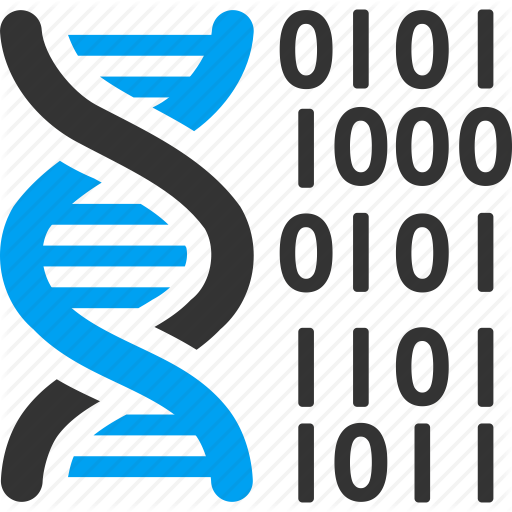Can you imagine a world catastrophe that would send humanity back to the stone age? Could our knowledge and history somehow survive? Just think about what would happen in case of a nuclear blast: all printed pages will decompose and all hard drive storage will deteriorate. Even the stones will eventually crumble. Yet, there might be something inside us that can outlast these physical limitations: Deoxyribonucleic Acid (DNA).
As you might already know, DNA stores our biological information. It programs our entire bodies, from eye color to skin tone. But how does this happen? DNA consists of four organic bases: Adenine, Guanine, Cytosine, and Thymine – A, G, C, and T in short. The exact sequence of these bases groups of three (e.g. CAG, AGC, CCT, etc.) dictates the instructions to make each of the proteins that our bodies need. Such a sequence is known as a codon. Still, this code can be used for other things too, such as secret messages.
In 1999, a team of scientists in New York pioneered by creating an alphabet in which each of the 64 possible DNA codons substituted for a specific letter, number, or grammar symbol. Hence, they managed to convert a 22 character message into a long strand of DNA and surrounded it with specific genetic markers. As an experiment, they hid the DNA over a period (.) in a type-written letter, with only a small smudge to give the location away. They then mailed the latter back to themselves, examined it, and looked for the DNA strand. Once the DNA strand was located, they found the genetic markers and successfully managed to sequence the DNA and decode the hidden message: “June 6 Invasion: Normandy.”

Figure 1: The alphabet of the 64 possible DNA codons. Source: Bear-McGuiness (2017)
This breakthrough would soon lie the foundations for DNA cryptography. What’s more, the rapid technological advancements allowed for coding other different formats than just simple text. By translating the 1s and 0s of binary code into DNA codons, digital data could be programmed into synthetic DNA, then decoded back into its original form. As such, the year 2012 saw another ground-breaking achievement: UK scientists encoded 739 KB (kilobytes) of computer files into DNA strands, including all 144 Shakespeare’s sonnets and an excerpt from Marin Luther King’s “I Have a Dream” speech. Other years passed, another discovery occurred. This time researchers from Microsoft and the University of Washington set another novel record: they used binary coding to capture an impressive 200 MB (megabytes) of data, including the Universal Declaration of Human Rights and an HD music video, all in strings of DNA.

Figure 2: The encoding scheme of binary to codons. Source: Bear-McGuiness (2017)
DNA stands out in a unique way, due to the surprising amount of information that it can hold in so little space. Theoretically, the current limit of DNA storage capacity is so high that you could fit 100 million HD movies on a pencil eraser. That is the equivalent of approximately 400,000,000 GB (gigabytes). It is even conceivable that one day we could fit all of the information currently on the internet into the space of a shoebox. Information is now stored on the magnetic tape and disks of computers. These pieces of hardware only last for a few decades at most, before degrading and becoming unreliable. Meanwhile, DNA has a half-life of 500 years, i.e. the amount it takes for half of its bonds to break. However, if left in a cold and dark environment, DNA could potentially last for hundreds of thousands of years.
Now that you have learned about the potentials of data coding, think about how one day you might be able to archive your whole life and thoughts into your own backyard. Think even deeper and picture how the seeds of the trees in your backyard could carry your data across the continents, or perhaps even into the far reaches of space. The Sun has a limited amount of energy that is known to still last for another five billion years. Even if we might one day disappear, our legacy can still live on (if anyone would think to look for it).
References:
Bear-McGuinness, L., 2017. Is DNA the future of data storage?. [Online]
Available at: https://ed.ted.com/lessons/is-dna-the-future-of-data-storage-leo-bear-mcguinness#review
[Accessed 16 October 2019].
Carmean, D. et al., 2018. Scaling up DNA data storage and random access retrieval. Nature Biotechnology, Volume 36, pp. 242-248.

